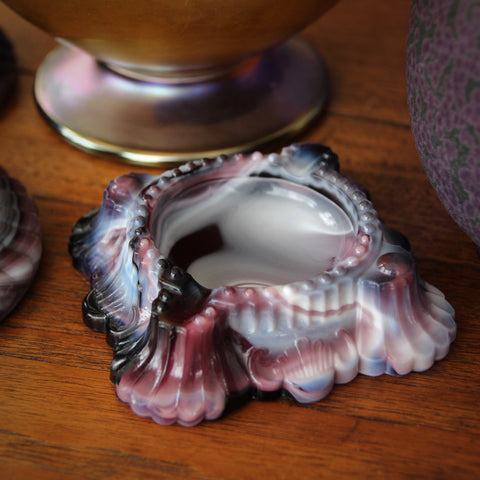In the Nineteenth Century, Western Pennsylvania, West Virginia and the Ohio River Valley emerged as the preeminent glassmaking region of the United States. The region had all the necessary ingredients for glassmaking: raw materials (silica-sand and limestone), cheap heat (natural gas and coal), cheap labor (and much of it from glass-making Eastern European countries) and rivers and railways (to ship-out the finished product).
Riverboat captain, Edward Muhleman, had made a tidy sum plying the waters of the Ohio River during America's Industrial boom. As he got older, he found himself ready to wrap-up his "seafaring" career—but he wasn't quite ready to retire completely. He set the goal of building the country's largest glass manufacturer in the Ohio River Valley. He founded his company (soon to be called "Imperial Glass") in Belleaire, Ohio, in 1901 and set-about raising funds and hiring managers. Building the physical plant (the factory) was slowed by several delays. However, in 1904, glass production finally began.
Imperial made pressed-glass, that is, glass items formed of molten glass in cast iron moulds. This method was much less labor-intensive than mouth-blowing glass, hand-cutting, or hand-finishing it. Imperial also used what is called a "continuous-feed melting tank" to make its products. In this method, glass chunks are dropped into a smelting tank (in batches or continuously), they are heated to liquid, and the molten glass is drained out as needed. This kind of continuous production allows the glass factories to operate 24 hours a day. The production never stops.
Within months, the brand new Imperial Glass Company was a major player in the American glass industry. Over eight decades, Imperial sought to make glass for a wide range of customers at many different price points. Imperial made inexpensive Depression Glass and they made expensive art glass objects, too.
In the 1950's, Imperial introduced the purple slag glass line shown above: compotes, candlesticks, covered bowls, ashtrays. In subsequent years, they expanded the color range (usually mixed with white). By 1984, Imperial was in dire straits, forcing it to declare bankruptcy and (eventually) close for good.
Click on the photo above to learn more about this attractive item.
Though our Greenwich Village store is now permanently closed, LEO Design is still alive and well! Please visit our on-line store where we continue to sell Handsome Gifts (www.LEOdesignNYC.com).
We also can be found in Canonsburg, Pennsylvania, at The Antique Center of Strabane (www.antiquecenterofstrabane.com).
Or call to arrange to visit our Pittsburgh showroom (by private appointment only). 917-446-4248


